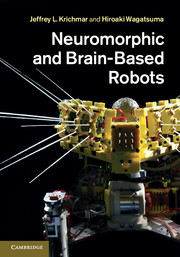- 中图分类号: TP1
- 语种: ENG
- 出版信息: Cambridge University Press 2011 378页
- EISBN: 9781139153553
- PISBN-H:9780521768788
- 原文访问地址:
KG评星
知识图谱评星,是一种基于用户使用的评价体系,综合图书的评论数量、引文数量、Amazon评分以及图谱网络中节点的PageRank值(即考虑相邻节点数量和重要性)等多种因素计算而得出的评价数值。星级越高,推荐值越高。CAT核心级
核心学术资源(CAR)项目作为教图公司推出的一项知识型服务,旨在打造一套科学、有效的图书评价体系,并协助用户制定相应的馆藏建设方案。CAR项目调查和分析12所世界一流大学的藏书数据,以收藏学校的数量确定书目的核心级,核心级越高,代表书目的馆藏价值越高。选取核心级在三级以上,即三校以上共藏的图书作为核心书目(CAT)。Neuromorphic and brain-based robotics have enormous potential for furthering our understanding of the brain. By embodying models of the brain on robotic platforms, researchers can investigate the roots of biological intelligence and work towards the development of truly intelligent machines. This book provides a broad introduction to this groundbreaking area for researchers from a wide range of fields, from engineering to neuroscience. Case studies explore how robots are being used in current research, including a whisker system that allows a robot to sense its environment and neurally inspired navigation systems that show impressive mapping results. Looking to the future, several chapters consider the development of cognitive, or even conscious robots that display the adaptability and intelligence of biological organisms. Finally, the ethical implications of intelligent robots are explored, from morality and Asimov's three laws to the question of whether robots have rights.







 京公网安备 11010602104826号
京公网安备 11010602104826号
